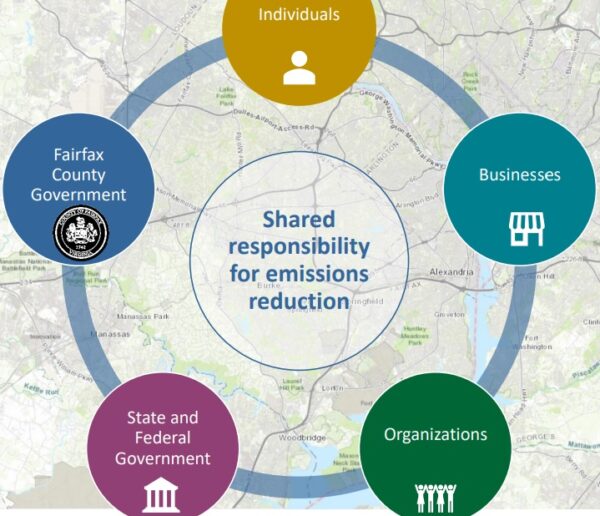
The clock is ticking on Fairfax County’s goal of achieving net-zero new carbon emissions by 2050.
With local government and school operations accounting for just 5% of all emissions, the county is developing a plan to help residents and organizations take action to reduce their carbon footprint and combat climate change.
Presented to the Fairfax County Board of Supervisors at an environmental committee meeting on Dec. 13, the proposal suggests starting to implement the Community-wide Energy and Climate Action Plan (CECAP) adopted in 2021 by partnering with businesses, nonprofits and others that will serve as “climate champions.”
“Every single person and organization can have negative or positive impacts for reducing our greenhouse gas emissions in time to prevent serious harm to our children, nature and communities,” Mount Vernon District Supervisor Dan Storck, chair of the environmental committee, said in a statement. “Each segment of our community…must have simple, easy, adoptable actions to get started and get done the changes we need.”
Expected to roll out early this year, the Climate Champions initiative will take a three-pronged approach, Office of Environmental and Energy Coordination (OEEC) staff told the board:
- A faith-based and nonprofit community pilot, led by the Faith Alliance for Climate Solutions (FACS)
- A business/industry pilot, focused initially on the hospitality sector and led by Visit Fairfax
- An outreach campaign aimed at getting individuals to reduce their greenhouse gas emissions
Having pilot projects focused on specific sectors will help the county tailor its resources, policies and messaging to their needs, Storck said.
A hotel owner, for instance, could provide insight into how their building could be more sustainable — and what incentives would make those changes feasible. Homeowners’ associations could raise awareness of programs like Solarize Fairfax County, which aims to reduce the cost of solar panel installations.
“We can sit in this room all we want, but we need messengers out there in the community, taking ownership of elements in CECAP to make sure we’re successful,” Board of Supervisors Chairman Jeff McKay said at the committee meeting.
Convincing churches and other places of worship to take action on climate change isn’t a challenge for FACS, a nonprofit with over 190 religious groups in Northern Virginia that has been a vocal advocate for CECAP and other environmental measures.
Many faith communities are already tackling climate projects, from solar sanctuaries that would turn them into refuges during power outages to staff at Reston’s St. John Neumann Catholic Church volunteering to clean up for events if they utilize reusable dishes and silverware to reduce waste.
The county’s pilot will help better coordinate those efforts and share ideas, while hopefully encouraging more congregations to get involved, FACS Executive Director Andrea McGimsey told FFXnow. Read More
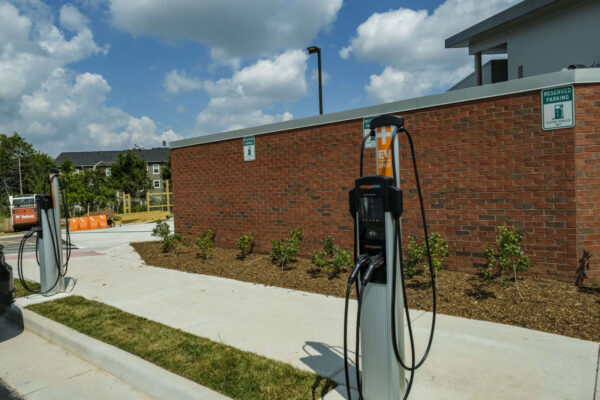
Fairfax County will waive fees for permitting and installing electric vehicle chargers for at least the next year and a half.
The Board of Supervisors unanimously voted on Tuesday (Oct. 11) to waive all county-imposed permit, installation and signage fees for electric vehicle chargers for a trial period of 18 months. The waiving of fees will go into effect alongside the release of the new Planning and Land Use System (PLUS) on Oct. 31.
“Exempting EVC installations from permit fees may help incentivize use of electric vehicles,” reads the staff report as the rationalization to waive fees.
Staff said it will report back to the board in a year on the “effectiveness of eliminating permit fees in incentivizing installation of EVC equipment.”
Coupled with the “Charge Up Fairfax” program aimed at supporting HOAs in installing electric vehicle chargers, the fee waivers indicate the supervisors have made it a clear priority to encourage more of the public to make the transition to electric vehicles.
The board directed staff in late September to look at the possibility of suspending the fees.
“This is but another step towards our journey of a carbon-free Fairfax,” Mount Vernon District Supervisor Dan Storck said. “[It’s] an essential statement about our board’s further commitment to incentivizing, supporting, and encouraging…folks who want to make a difference with the vehicles they drive. That and buildings are the single highest emitters of carbon and if we can start addressing those two major ones…we can start making a difference.”
He noted that this might be “one piece…of a larger package” in reducing the county’s carbon footprint, but it’s one of the “most visible” pieces.
The board vote technically included a public hearing, but no one from the public commented. The discussion was also minimal among supervisors, only lasting a few minutes.
By waiving the fees, however, the county will be missing out on some money. Fees vary depending on the size and complexity of the charging stations, but the county is expected to lose between $10,000 to $15,000 in revenue during fiscal year 2023, which started July 1.
Still, that’s a drop in the bucket compared to the entire Land Development Services budget.
“The lost revenue will not have a significant impact on the adopted LDS budget of approximately $46 million,” reads the staff report.
As a whole, the county’s budget is nearly $5 billion.
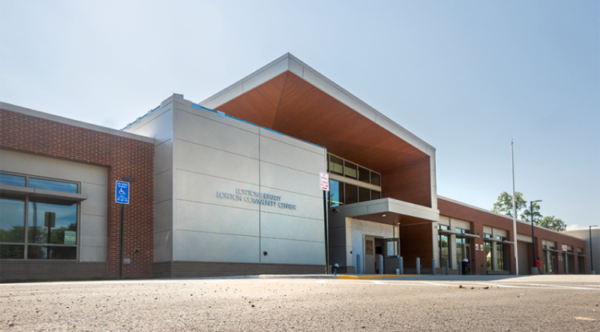
The doors of the $18 million Lorton Community Center are now open, ahead of a ribbon-cutting ceremony set for this coming weekend.
The 30,000-square-foot facility on Richmond Highway is combined with a renovated and expanded Lorton Library as well as the new 1.7-acre Lorton Park.
The community center features a gym, a fitness room, a kitchen, an art room, and a sensory room. The facility also includes space for the Lorton Senior Center and the Lorton Community Action Center, a nonprofit that provides emergency financial assistance to those in need.
The 10,000-square-foot library has been expanded by 6,000 square feet for a larger children’s area, increased seating, and more meeting and study rooms. The new Lorton Park is located behind the parking lot and has open field space, picnic tables, playground, fitness area, and a trail loop.
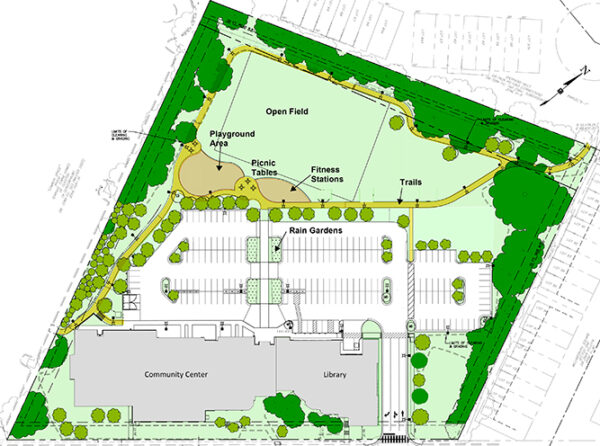
The facility also has sustainability features like a rain garden, underground stormwater facility, and infrastructure for solar panels.
The full project — the park, community center, and library — cost $27.23 million, with the community center accounting for essentially two thirds of the cost, according to a county spokesperson.
The entire facility opened to the public yesterday (Monday) with a ribbon cutting and “community celebration” scheduled for Saturday (Oct. 15) afternoon, rain or shine.
Mount Vernon District Supervisor Dan Storck, Board of Supervisors Chairman Jeff McKay and other local officials are expected to attend. There will be tours of the new center and light refreshments.
The facility was initially scheduled to open late last month but was pushed several weeks to allow for “final facility work to be completed,” Storck said.
The Lorton Community Center and Lorton Library facility will open its doors Oct. 10, 2022, with a grand opening celebration scheduled for Oct. 15, 2022. The new opening date was shifted from a previously-announced date of Sept. 26 to allow final facility work to be completed.
— Supervisor Dan Storck (@DanStorck) September 23, 2022

(Updated at 11:25 a.m. on 8/5/2022) Fairfax County is exploring being the first Virginia locality to create a “green bank” as a way to achieve carbon neutrality by 2050.
In a presentation to the Board of Supervisors’ environmental committee last week, county staff said a green bank can help spur investments in clean energy.
Essentially, a green bank is a publicly-funded financial institution that helps fund, develop, and support clean energy technologies for both residential and commercial entities.
“A green bank can act as a program sponsor, a trusted advisor, and a clearing house of information for residents and the private sector,” John Morrill, from the county’s office of environmental and energy coordination, said in his presentation to the committee.
The board asked staff to look into the idea of a green bank two years ago, ultimately authorizing $300,000 for a feasibility study. The General Assembly also passed legislation last year letting localities set up their own.
So far, the feasibility study found that a green bank could lead to $650 million of investments in just the first five years. Those investments would focus on residential energy efficiency measures, rooftop solar panels for both county homes and businesses, and shifting commercial car fleets to electric.
“The role of a green bank would be to encourage and facilitate those investments through targeted programs, direct incentives, and partnerships with private financial institutions and service providers,” Morrill said.
A few committee members questioned whether the county’s green bank would be “crowding out” private investment that would have happened regardless.
“That’s probably the crux of the issue and the most challenging operational,” Braddock District Supervisor James Walkinshaw said. “It doesn’t do us any good to fund a project that would have happened otherwise.”
According to staff, a county-backed green bank could help homeowners better afford improvements like solar panels or help make decisions about what’s right for them. For example, the county could provide “cash incentives” for installing rooftop solar panels in exchange for the county getting the renewable energy credits.
Morrill also noted that a green bank could help make improvements for low and moderate-income households that could benefit from the potential savings.
Staff recommended the county create a green bank as a non-profit 501(c)(3) with a board that could include county officials.
While no Virginia locality has a green bank yet, it is becoming a trend nationwide that was actually kicked off by nearby Montgomery County, which is among the first localities in the country to set up a county-backed green bank. D.C. also has a green bank.
(Correction: This article previously stated that Montgomery County was the first U.S. locality to create a green bank. While the county has said that, it was preceded in 2010 by New York City, which also claims to have the nation’s first local green bank, and St. Lucie County in Florida, which formed the nonprofit Solar and Energy Loan Fund.)
Staff recommended that the board follow Montgomery County’s lead in committing “a mid-range investment” for a green bank with initial funding ranging from $3 million to $15 million.
Chairman Jeff McKay suggested the county could partner with other local jurisdictions, so that Fairfax County doesn’t have to bear the sole financial brunt for an initiative that would benefit the region.
Committee members expressed overall support for the green bank proposal and asked staff to complete the study.
Staff will complete a draft ordinance and provide an official funding recommendation in the fall. The matter could come before the environmental committee for a vote in October with a Board of Supervisors public hearing scheduled for late this year or early 2023.
“If we initiate this, we have a chance to start this up in a way that not only benefits Fairfax County residents but also other counties around us to hopefully move more quickly adoption of ways to save energy and optimize our reduction in greenhouse gases,” Mount Vernon District Supervisor Dan Storck.
Photo via Sandra Parra/Unsplash
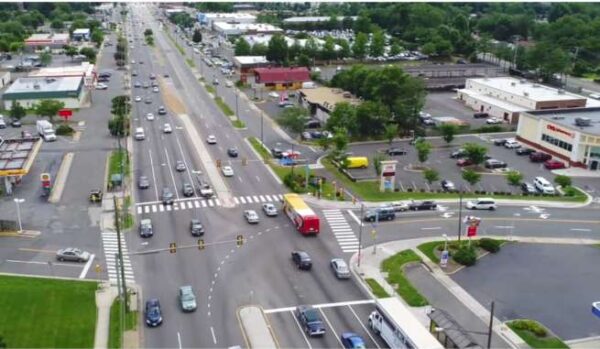
A project to underground Richmond Highway utilities may be buried due to cost, construction delays, and the risk it poses to federal funding for other projects happening along the corridor.
The Fairfax County Board of Supervisors weighed the pros and cons of undergrounding utilities along the highway, also known as Route 1, at an economic initiatives committee meeting on Tuesday (July 26).
Undergrounding utilities is a fairly common (and supported) practice, but the Route 1 proposal is complicated by two other major infrastructure projects in the corridor: the highway widening and the build-out of a bus rapid transit (BRT) service.
While the board didn’t take any definitive action on Tuesday, it was clear that a number of committee members, including Chairman Jeff McKay, were leaning towards scrapping the project altogether.
“It feels a little bit like ‘why wouldn’t we do it?’ if you just look at it on the surface, but as we dug into it today quite a bit…it makes it a little bit clearer how unclear it is,” Providence District Supervisor Dalia Palchik said.
In a presentation, staff said the county would be solely responsible for financing any undergrounding, with no assistance from the Virginia Department of Transportation (VDOT) or the Federal Transit Authority (FTA).
Undergrounding utilities could also result in a two-year delay for the Route 1 widening and BRT projects, tacking on an extra year each for design work and construction. That would push the completion date for the widening to 2031 and for the BRT to 2032.
Utility undergrounding would also increase the cost of the two projects by at least $264 million, requiring an additional $136 million for the actual construction and potentially another $128 million to account for inflation during the two-year delay.
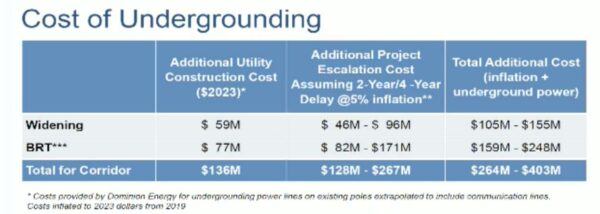
To raise the needed funds, county staff proposed working with the General Assembly to implement a utility “surcharge.” A $1 per month surcharge for residents and a 2.5% surcharge on commercial properties that could reach a maximum of 6.67% would bring in $40 million in revenue annually.
However, a surcharge would require an agreement with utility companies, mainly Dominion Energy, Verizon, Cox, and NOVEC. Even if an agreement is reached, it could take 12 to 18 months for the companies to sign off through their own “internal legal review” processes, delaying the undergrounding even more.
According to staff, undergrounding utilities could also result in the loss of $334 million in federal funding that the FTA is providing for the BRT project. Read More

Fairfax County is on track to bring in more than $1 million in revenue from the first year of its plastic bag tax.
In the first five months after the tax took effect on Jan. 1, the county government received over $500,000, the Office of Environmental and Energy Coordination said in a memo to the Board of Supervisors.
That’s even with retailers allowed to retain two out of every five cents collected on each disposable plastic bag they distribute in 2022, a provision intended to offset the costs of transitioning away from plastic for businesses.
The OEEC projects that the tax will generate $1.2 million for the county over its inaugural year.
“Revenue is likely to fluctuate in the first few years of implementation,” OEEC Director Kambiz Agazi wrote to the board, noting that the amount of the tax retained by retailers will drop to one cent on Jan. 1, 2023. “…As has been observed in other jurisdictions with a plastic bag tax, over the long term, tax revenue is likely to trend downward as consumers begin reducing their use of disposable plastic bags.”
The revenue that the county has “regrettably” collected so far suggests many community members haven’t gotten into the habit yet of bringing their own bags to grocery stores and other businesses, Mount Vernon District Supervisor Dan Storck observed yesterday (Tuesday) at the end of the board’s environmental committee meeting.
By a matter of days, Fairfax County became the first locality in Northern Virginia to adopt a plastic bag tax in September. The 5-cent levy was enabled by a 2020 state law and is supposed to encourage people to use more sustainable alternatives.
Under the law, revenue can be used to support educational programs, clean up pollution and litter, and provide reusable bags to people who receive federal Supplemental Nutrition Assistance Program (SNAP) or Women, Infants and Children (WIC) food benefits.
In his memo, Agazi proposes allocating $511,000 already accrued from the tax to existing county programs, including:
- Operation Stream Shield, which pays people experiencing homelessness to help clean up local streams ($370,000)
- Storm drain education and labeling projects ($70,000)
- Maintenance activities by the Community Labor Force, which the sheriff’s office says will be suspended in September ($30,000)
The plan also designates funding for technology that collects litter in county waterways, gloves and other materials for volunteer stream cleanups, and reusable bags for SNAP and WIC recipients, food pantries, and farmers’ markets.
For future beneficiaries, staff proposed having a formal process where county agencies apply for funding. A project selection committee would prioritize the submitted projects, which would then be reviewed by the county’s chief financial officer and Department of Management and Budget.
In addition to meeting the state criteria for the plastic bag tax, the projects would have to be based in the county or part of a regional initiative that directly benefits the county and scheduled to start in the same year that money is requested. They also can’t require new, permanent staff positions, be part of the capital improvement program, or have other sources of funding.
“This is an opportunity for us to repurpose those funds, if you will, to hopefully make a difference in our environmental management,” Storck said.
Photo via Christopher Vega/Unsplash
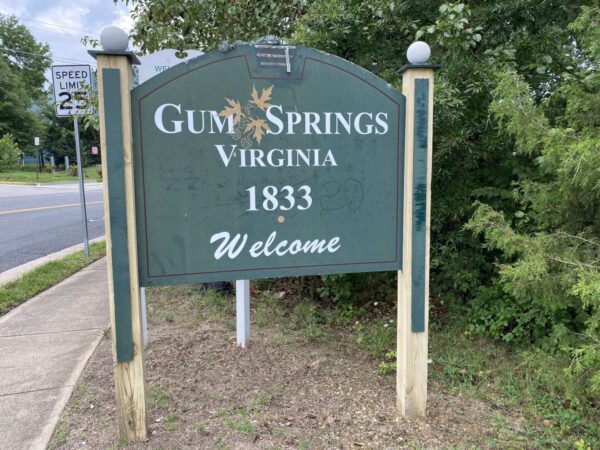
As motorists make the turn onto Fordson Road from Richmond Highway, they are greeted by a green sign welcoming all to Gum Springs. Underneath the bolded letters, it reads “1833.”
Gum Springs is perhaps the most historically significant Black community in Fairfax County. It was founded nearly two centuries ago by West Ford, a former enslaved person at Mount Vernon who was freed.
A number of his descendants also believe he’s the only son of George Washington, a claim Mount Vernon officials have denied.
What isn’t disputed is that the family of the nation’s first president deeded Ford 160 acres of land. In 1833, he sold that land to purchase 214 acres in what is now the southeastern portion of Fairfax County.
He named this new community “Gum Springs,” supposedly after a tree and a spring where Washington watered his horses.
And, for the last 189 years, Gum Springs has been home to thousands of people that were not necessarily always welcomed in the county.
“Gum Springs gave African-Americans a place of being,” Ron Chase, director of the Gum Springs Historical Society and Museum, told FFXnow on a recent summer afternoon. He’s lived here nearly all of his life and is one of potentially 500 descendants of the original residents. “It gave them a sanctuary. It gave them a place to live.”
But community leaders say Gum Springs’ present and future are now threatened.
Only about 30% of residents who live in the community today are Black, according to 2021 county data.
There are the typical culprits, like urban sprawl, road construction, gentrification, and the exploding house market. But what makes this situation particularly unique is Gum Springs’ contributions to not just county history, but its place in American lore.
“We are constantly being challenged,” Queenie Cox, president of the New Gum Springs Civic Association, told FFXnow. ” This community is [under threat] of being dismantled, and eliminated for its contribution to this [nation’s] history and to the history of our first president of the United States.”
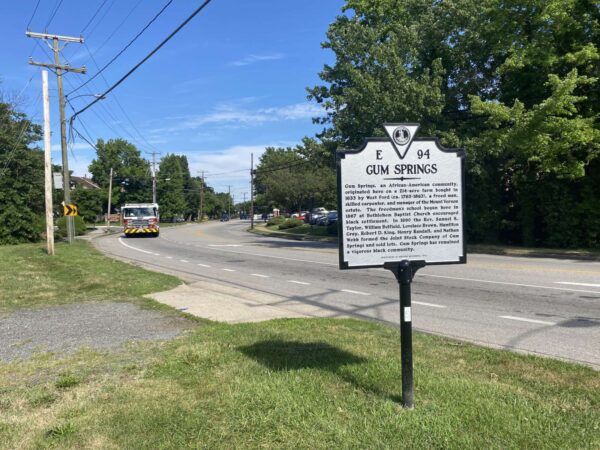
Preserving the identity of Gum Springs
Both Cox and Chase say there’s a litany of recurring battles that Gum Springs keeps having to fight to keep the community alive.
For one, there’s the exploding housing market, bringing new residents to the historic community. It’s in a major corridor, only a few miles away from Old Town Alexandria, while being a manageable commute from the District. Read More

Underground Utilities Proposed for Route 1 — Mount Vernon District Supervisor Dan Storck has joined many residents, businesses, and state Sen. Scott Surovell (D-36) as an advocate for moving power lines along Richmond Highway underground, though that isn’t in the current designs for widening the road. Advocates say undergrounding would limit storm damage and bring economic benefits. [On the MoVe]
Metro Plans for Budget Shortfall — “Metrorail has only recovered 42% of its ridership and Metrobus has recovered about 60%. This time, Metro officials are not banking on the cavalry — in the form of a federal bailout or additional local dollars — to arrive. Later this summer, board members and new Metro General Manager Randy Clarke will begin to calculate how to plug a $356 million operating budget gap.” [DCist]
Police Investigate Gunshot in Fair Oaks — “Fairfax County Police are investigating a shooting that occurred early Tuesday morning in the Fair Oaks area, according to the weekly crime report. Police responded around 3:18 a.m., for the report of a man firing a handgun into the air in the 12000 block of Thompson Road.” [Patch]
Bailey’s Crossroads Library Volunteer Honored — “Fairfax County officials gathered Saturday to honor Carmen Fernandez, a longtime pillar of the Culmore community. A conference room at the Woodrow Wilson Library in Falls Church now bears plaques in Fernandez’s honor.” [Fairfax County Public Library]
McLean Theater Group Retakes the Stage — “McLean Community Players is back after a three-year hiatus and will hit the Alden Theatre’s stage July 22 to 24 with ‘The Show Must Go On! A Musical Revue.’ The effort features an array of songs from past productions and shows the company hopes to perform in the future.” [Sun Gazette]
Local Hummingbird Photographers Get Focus — “I have been promised hummingbirds. I am, after all, at Green Spring Gardens, in the Alexandria area of Fairfax County, prime hummingbird territory…Jane [Gamble] takes me somewhere we’re guaranteed to find hummingbirds: inside the house, where 46 hummingbird photos hang on the walls.” [The Washington Post]
It’s Tuesday — Rain in the evening. High of 87 and low of 70. Sunrise at 5:55 am and sunset at 8:36 pm. [Weather.gov]
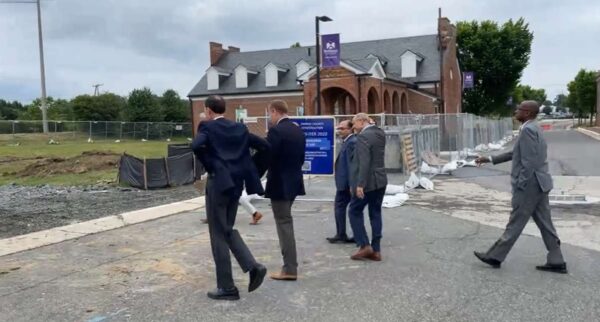
Construction is underway on Fairfax County’s latest effort to remake the former Lorton Reformatory grounds into a destination for local residents and tourists.
Board of Supervisors Chairman Jeff McKay, Mount Vernon District Supervisor Dan Storck, and other local officials broke ground Friday (June 24) on a renovation of two buildings — designated W13 and W15 — that once housed prison inmates.
Located along Ox Road on the west side of the 52-acre site, now known as the Workhouse Arts Center, the 4,500-square-foot buildings will get their brick exteriors restored, while their interiors are overhauled for future commercial tenants. The county has its fingers crossed for a restaurant or brewery.
“We hope that it provides food and beverage opportunities and places for people to come here and spend more time, not just to stop off, but spend the better part of the day exploring the Workhouse,” McKay said. “These buildings will go a long way to doing that.”
Funded by a $6.3 million county investment, the project will also transform the open space between the buildings into a plaza with a boardwalk, raised walkways, seating areas, trees, and new paved paths along Ox Road.
It’s part of a larger plan to redevelop the former prison complex that has been in place since July 2004.
Opened to the public in September 2008, the Workhouse Arts Center now consists of 11 restored buildings that feature art galleries, studios, classrooms, facilities for ceramics and other crafts, and the Lucy Burns Museum, which delves into the Lorton prison’s history.
Additional amenities envisioned for the campus include housing for resident artists and performers, an amphitheater or music hall, a 450-seat theater, a 300-seat performing arts center, a 600-seat events center, and an outdoor garden with a greenhouse.
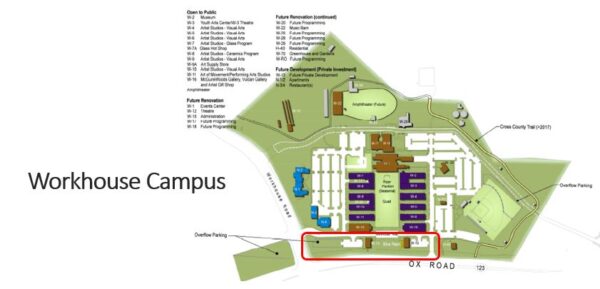
The W13 and W15 buildings have been approved for eating establishments with a total of 400 seats. Read More
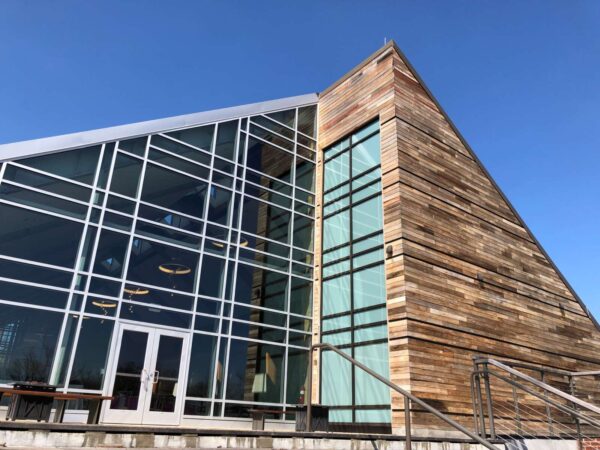
Nearly 22 years after Lorton Prison closed in 2000, Fairfax County planners and developers are in the thick of reimagining what the sleepy spot along I-95 will look like in 2040.
Staff are currently evaluating feedback from a second round of community engagement in March on what the community envisions for Lorton. The meetings followed an initial round of feedback in 2019.
Barbara Byron, director of the Fairfax County Department of Planning and Development, says conceptual frameworks are being developed along Lorton Road between Silverbrook Road and Richmond Highway.
“The maps will help visualize potential improvements to the public realm, such transportation and parks improvements to better serve the area, and potential alternatives to the planned mix of land uses and development within the area — primarily at the three commercial centers of Gunston Plaza, Lorton Marketplace and the Lorton Station Town Center,” Byron said.
Mt. Vernon District Supervisor Dan Stork notes that significant transformation is already underway.
“In 2000 as the Lorton Prison was closing, the community came together to plan for the future of Lorton,” he told FFXnow. “Today, I am particularly proud of the role we have all had in bringing much of that vision to fruition, with three new schools, several new residential developments, and many new businesses and commercial centers.”
Ultimately, the county hopes Lorton will become a destination for residents and regional visitors that is anchored by the Workhouse Arts Center, the new Lorton Community Center and library, the Liberty mixed-use community, parks, and the creation of a new downtown east of I-95 along Lorton Road.
But the challenges of transforming a largely suburban area with commercial centers and large swaths of parking lots remain.
“Development patterns in the Lorton area are heavily suburban in character with commercial centers and large parking lots,” Byron said. “However, there is an opportunity to identify and attract unique, niche commercial uses that could turn it into a go-to destination in Northern Virginia.”
Stork says the recent reinvigoration of feedback on the future of Lorton will help guide the process of bringing the community’s “vision for the next 20 years to life.”
For the coming decades, property owners and private investors’ willingness to share that vision will be a key to realizing it.
In 2021, the Fairfax County Board of Supervisors approved the consideration of a comprehensive plan amendment to recommend a town center concept near the Virginia Railway Express station, along with gateway locations and residential areas at a mix of densities. A community task force has collaborated with the county to begin work on the study, which will wrap up in the winter.
Next steps include drafting a comprehensive plan amendment on the topic.

